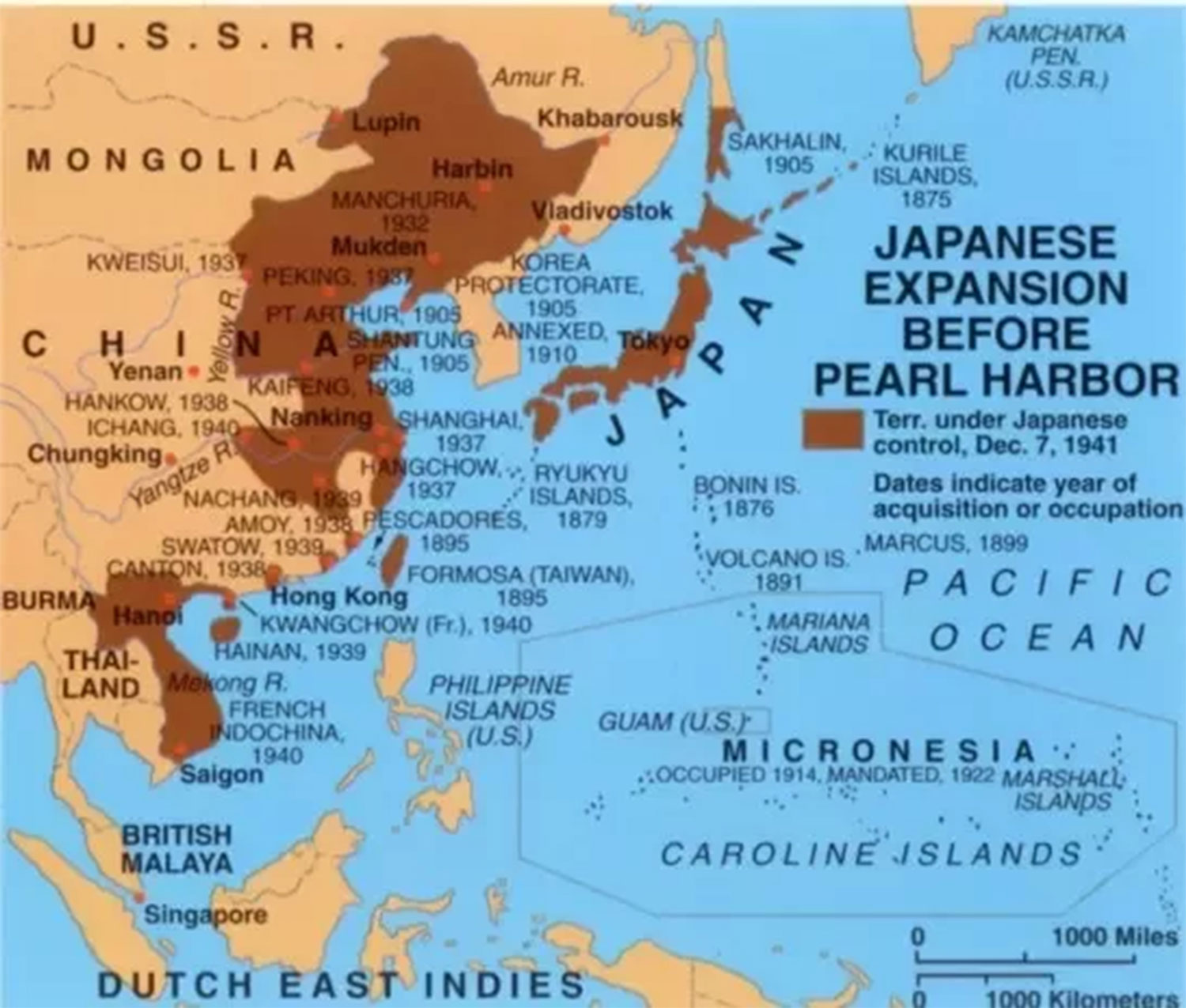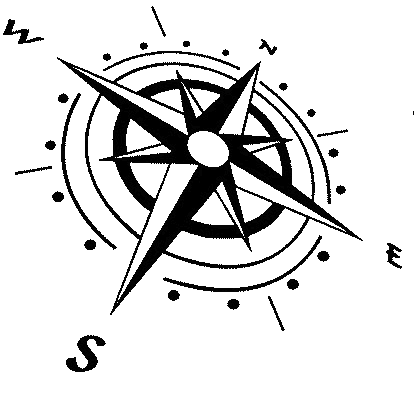by Christine D. Spinck
http://www.weihsien-paintings.org/ChristinaSpink/9)AppendixB_(History).pdf
APPENDIX B
Japanese Presence in China
Japanese Presence in China
contents_files/image012.jpg)
A continued Japanese presence in China began at the end of the nineteenth Century. In the Sino-Japanese War of 1894-95, Japan invaded Shantung and Manchuria in its dispute with China over the control of Korea. Following its decisive victory, Japan received the most-favored-nation status that had been extended to Britain, France and the United States in 1843-44. Japan’s new status and the opening of four more ports to trade, created an “imperialist scramble” on the part of Britain, Germany, Russia, France and Japan to partition China into “spheres of influence.” Germany, “taking advantage of the murder in Shantung of two German Roman Catholic missionaries,” seized Tsingtao, forcibly leased territory in Kiaochow, and was assured railway and mining rights in Shantung Province.
In 1899 in the Shantung Province, flood and famine combined with local unrest against the German and foreign presence to create an uprising which culminated in the Boxer Rebellion. National feelings were strong against missionaries, particularly Catholics, who were seen as foreign agents after an imperial rescript gave Bishops privilege to seek interviews and rank with viceroys and governors, and to have certain civil jurisdiction over their converts. The climax came in Peking in 1900 when missionaries, Chinese Christians and foreign diplomats were besieged in the legation quarter of Peking for forty-five days until relieved by an international expedition.
Because they were scattered throughout China, rather than concentrated in the port cities, missionaries received the brunt of the hostilities. Approximately one hundred and eighty-seven Protestant missionaries were killed during the Rebellion. “Of these, slightly more than a third were under the China Inland Mission and its associated societies.” Though twenty-one were CIM children, the Chefoo School was spared any bloodshed. In keeping with their total reliance on God to provide, the mission that suffered the most loss refused not only to “enter any claim against the Chinese government, but to refrain from accepting compensation even if offered.
The years after the Boxer Rebellion were fruitful and saw expansion of the missionary movement and the establishment of Western education in China. Even the disorder of the Revolution of 1911 and the establishment of the Republic did not interfere substantially with mission work or the security of the Westerner. “Both Manchus and revolutionists were eager not to offend the foreigner for fear that the Western powers would support their opponents.” This protected status would soon come to an end.
During World War One, while the rest of the foreign powers were busy fighting each other, Japan presented its twenty-one demands to China. Divided into five sections, the first two sections of the twenty-one demands called for recognition of Japanese rights in Shantung, Mongolia and Manchuria. Japan declared war on Germany in August of 1914 and by November had seized Germany’s holdings in Shantung. After the First World War, Shantung Province was assigned to Japan by the Treaty of Versailles in which China had no say and therefore refused to sign. However, the Washington conference of 1922 made Japan restore its holdings in Shantung to China. Japan acquiesced, but still maintained a presence in the Province. Despite the return of Shantung Province to China’s control, China was still obligated to the extraterritoriality of the Western powers. This Western presence contributed to continued unrest among Chinese student and political groups.
After the First World War, Western prestige and power in China had changed. No longer could the Western powers jointly impose their will on China. The groundwork had been laid for domestic forces to emerge. By the mid-Twenties, the Chinese Communist Party (CCP) and the Kuomintang Nationalist Party (KMT), led by Sun Yat-sen, were functioning. As the Chinese political parties developed, agitation increased against the foreign presence, especially that of the British and the Japanese. With the rise of Chinese nationalism, anti-imperialist and anti-Christian demonstrations grew. These uprisings peaked in 1927, but by then many of the missionaries, as advised by their consuls, had evacuated interior China for the port cities, or had left China altogether.
Although the persecution was not as drastic as that of the Boxer Rebellion, it was more widespread and the prospect for a semblance of peace seemed remote. One reason restoration of order seemed unobtainable was due, in part, to the continued 2unrest between the KMT and the CCP. By 1928 the KMT had formed a national government in Nanking. However, warlordism, a continued Communist presence in the rural areas and the KMT’s own factions prevented true unification of China. The rise of Chiang Kai-shek as the leader of the KMT and his anti-Communist movement eventually split the party after much bloodshed, most notably in Nanking and Shanghai. Chiang then established a government in Nanking.
While Chiang pursued the Communists, Japan sent troops into Shantung. Japan justified its action as protecting Japanese lives and property from the strong anti Japanese and anti-imperialist feelings of the Chinese, which often erupted into strikes and protests. The clash of Japanese and nationalist forces only intensified anti-Japanese sentiments, especially as Japan reoccupied part of Shantung. Acting out of its own sense of “manifest destiny,” Japan seized Manchuria in 1931. The Japanese considered China a “backward and disorganized nation, victimized by the Western powers,” and felt they had a duty to dominate East Asia. That domination included Manchuria with its relatively unpopulated territory, which could easily be settled by Japan.
China sought help from the League of Nations to oust Japan, but no significant enforceable action was taken. Japan resigned from the League, the clashes continued, and Manchuria became Manchuko. By 1933, Japan and China signed a truce that left Japan in control of the area north of the Great Wall. Intent on wiping out the Communists, but knowing that his troops were inferior to Japan’s, Chiang Kai-shek adopted a policy of “first internal pacification, then external resistance,” to buy time to prepare his army and to rout the Communist threat to his power. This policy, however, did not endear Chiang to his own people. “While the Chinese disliked the Kuomingtang, they hated the Japanese more.... In a paradoxical way, therefore, the Japanese threat may have been a significant reason why Chiang Kai-shek’s regime survived the period 1931 1934.” Any further revolutionary upheaval would only have invited increased aggression from Japan.

In the early 1930’s, Shantung province went through a civil war between two warlords. After the civil war, Han Fu-chu, the winner, “apparently reached an understanding with the Japanese that he would remain neutral if the Japanese attacked Peiping, Tientsin or other areas in North China. In return, the Japanese agreed to spare Shantung.” On July 7, 1937, after provocation by both sides, war broke out between Japan and China when Japan came south and attacked at the Marco Polo Bridge and then occupied Peking, Tientsin, Shanghai, and by December of 1937, Nanking.
Chiang’s Nationalist government fled to Chungking, which was not under Japanese occupation. Chiang Kai-shek’s strategy of trading territory for time meant that he accepted the loss of large areas of North and Central China. By 1938, the Chinese defended positions in the hills and mountains where the motorized Japanese 3army could not easily penetrate. The Japanese countered by occupying the coastal areas and causing economic strangulation for the interior. So the lines between the two combatants remained essentially in a stalemate battle of attrition until mid-1944. And, by 1940, Japan sought imperial expansion into other areas.
http://www.weihsien-paintings.org/ChristinaSpink/9)AppendixB_(History).pdf
#








